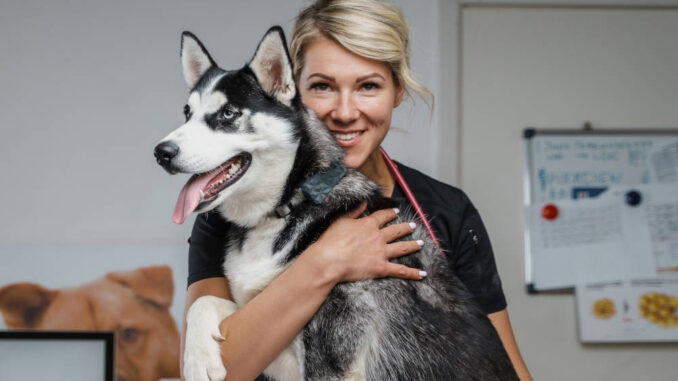
This article was updated on May 5th, 2023
Eyelid cysts are very common, particularly in older dogs. Oftentimes, an owner is unaware that they’re present as they can initially be quite small. It is not uncommon for an owner to come to my clinic with their elderly dog for its vaccination, only for me to detect a new eyelid cyst.
These cysts tend to grow slowly and don’t bother dogs. However, they can become an issue if they scratch the surface of the eye or become infected. For this reason, we always need to note their presence and to monitor their progression closely.
What are eyelid cysts?
Cysts on the eyelid are not always easily diagnosed as they can sometimes mimic other small growths such as warts or tumors. However, an experienced vet will usually be able to know what growth is a cyst and what is something else.
While there can be many types of lesions that grow near the eye and on the eyelids, more than three in four will be benign.
Types of eyelid cysts & what they look like [With Pictures]
Meibomiam cyst (chalazion)
These are the eyelid cysts I see most commonly in my patients. The tarsal glands of the eyelid can become blocked, and there is then a swelling that appears. This tends to be smaller than a pea and can be flat or raised. It is generally a light color, such as pale pink or light yellow.
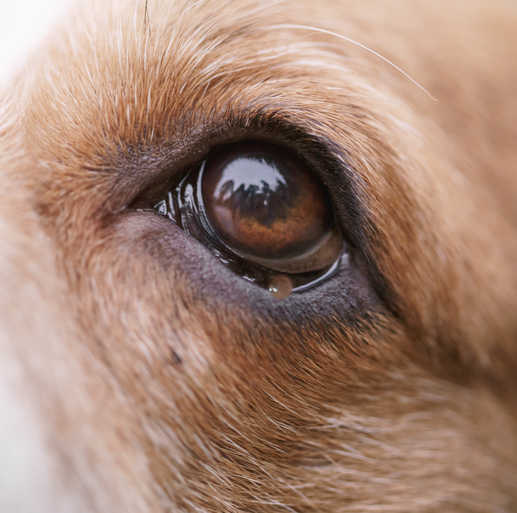
You can view another picture here on VetLexicon.com and on nih.gov.
The skin around the cyst can become inflamed and red. Secondary infections are possible, and these can lead to discharge and eye rubbing. If the cyst does touch the surface of the eye, this can lead to corneal ulcers and conjunctivitis.
These lesions are typically seen in older dogs. Smaller cysts that are not causing issues or touching the eye tend to be monitored. However, if the cyst grows or starts to cause signs, it will be surgically removed. Any infection would also need to be treated with topical antibiotic drops.
A stye
A stye is different from a cyst; it is not caused by a clogged gland and is a primary bacterial infection within the eyelid. The surrounding skin tends to be red and the lesion can be tender and warm.
Styes can usually be treated with antibiotics, which may be topical and/or oral. Owners can also gently bathe the lesions and use a buster collar to prevent rubbing. These eyelid lesions should reduce in size over the course of a few days, as the body deals with the infection.
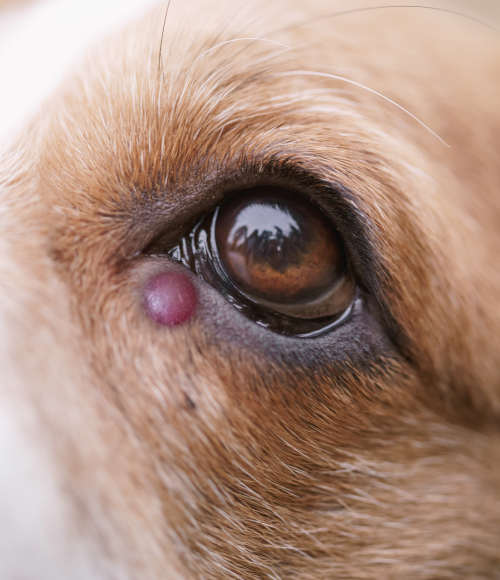
Meibomian tumor
Thankfully, most of these tumors will be benign, but sadly, some growth in this region will be cancerous. For this reason, we always need to be cautious when dealing with abnormal lesions of the eyelid.
These tumors tend to be quite ‘knobbly’ and irregular in appearance. They grow slowly and can ulcerate, bleed and become infected. Many dogs will find them irritating, so will rub at them. We may also notice squinting and eye discharge, if the growth touches the delicate eye.
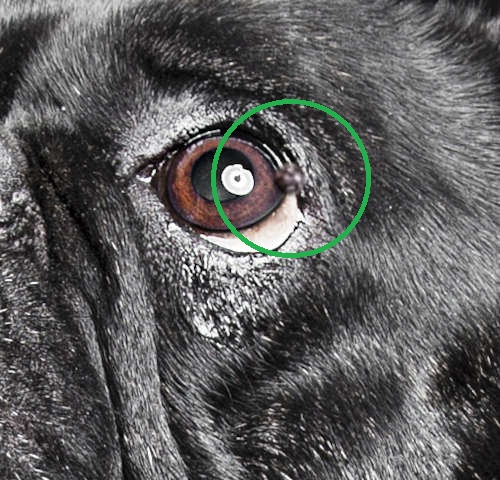
These growths can usually be removed surgically with ease. In some instances, cryotherapy is also used, to help prevent re-growth.
How to identify eyelid cysts – key characteristics
The eyelids should be smooth and symmetrical. There should be no lesions or growths on them. Should a new growth appear, this is something to consult your vet about.
Signs such as eye squinting, a red eye and eye discharge can also point towards an eyelid cyst. Again, abnormal symptoms involving the eye are always reason to contact a veterinary professional.
Is it a cyst or is it something else? How to differentiate
Generally speaking, cysts are smooth and symmetrical. They remain small and can cause localized inflammation.
However, most cysts are small and not always easily identified. In the initial stages especially, they can look very similar to other lesions including meibomian gland tumors and styes. For this reason, it is always best to have a vet take a look at a new lesion on the eyelid.
The vet will examine the eyes and eyelids, as well as any growths. They should also stain the eye for any ulcers and measure the local tear production.
How frequent are eyelid cysts in dogs?
Eyelid cysts and growths are very common, and we see them in a large number of our patients. The older a dog, the more likely they are to develop an eyelid cyst or growth.
Are eyelid cysts dangerous or painful for a dog? How does it affect my dog’s eyes and vision?
A cyst should not cause any pain and dogs won’t know they have them when they’re small. However, a secondary infection or conjunctivitis will lead to some ocular discomfort. If there is an infection, we may see redness, eye squinting and discharge.
Infections should be treated promptly with medicine such as antibiotics and anti inflammatories. Owners can also wipe away any discharge with cotton wool and warm water.
A dog’s vision should not be affected. The exception to this would be if a cyst touches the surface of the eye and causes a corneal ulcer. If an ulcer is not treated promptly, it can worsen and we could even potentially see lifelong scarring and eyeball rupture.
Will an eyelid cyst on a dog go away on its own or does it need to be treated?
It is possible for cysts to gradually shrink and go away, without any intervention. The body is a wonderful thing! However, many cysts stay there for years, without growing or changing.
Treatment is not always needed but is advised if the cyst is causing symptoms and bothering the dog. Similarly, any cyst that touches the surface of the eye would need to be removed.
Can I treat an eyelid cyst at home?
We cannot remove an eyelid cyst from home, nor should they ever be squeezed. What we can do, is to keep them nice and clean by bathing the eye regularly if there is any crust or discharge.
If the cyst is growing or starting to bother your dog, it is time to see a vet.
How can an owner find out if their dog’s cyst needs intervention?
The best way to know what to do about your dog’s cyst is to get a professional’s opinion. They may be happy to leave the cyst alone and to take a ‘wait and see’ approach, or they may advise that it is best to remove the cyst.
What can a veterinarian do about an eyelid cyst?
As discussed, many cysts are left untreated. However, when necessary, they will be removed surgically under a general anaesthetic. Cost of this depends on the size of the dog as well as the size and complexity of the cyst. As a rough guide, this surgery will cost about $300-600.
Many vets would combine a surgery like this with any other required procedures in an older dog, such as a neutering, a dental or other lump removals. This helps to keep costs down and avoids multiple anaesthetics in older patients.
It is worth mentioning, wets do not often sample of biopsy these lesions, as they’re too small to allow this. Instead, the lump is entirely removed and can be sent to the lab for analysis if the vet think this is needed.
What causes eyelid cysts in dogs?
Eyelid cysts are caused by a build-up of the lipid secretion that comes from the tarsal glands within the eyelid. This can happen because of an obstruction of the gland’s outlet, or because the secretion becomes thicker than usual and cannot drain as it should.
Related posts:
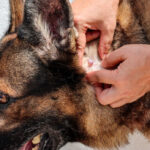 Types of Cysts Often Found on a Dog’s Neck or Head [Vet Advice] - Canine cysts of the head and neck are fairly common and most of them don’t cause serious problems. There are… [...]
Types of Cysts Often Found on a Dog’s Neck or Head [Vet Advice] - Canine cysts of the head and neck are fairly common and most of them don’t cause serious problems. There are… [...] 4 Cysts Often Found on Dog Paws [With Pictures & Vet Advice] - Ahh dog feet, giant Great Dane Marmaduke paws, tiny terrier tootsies, the puffy, fluffy white feet of a Bichon Frisé.… [...]
4 Cysts Often Found on Dog Paws [With Pictures & Vet Advice] - Ahh dog feet, giant Great Dane Marmaduke paws, tiny terrier tootsies, the puffy, fluffy white feet of a Bichon Frisé.… [...] Burst or Ruptured Cysts on Dogs: Our Vet Shares What to Do - When a dog does come into my clinic with a ruptured cyst, the owner can be quite alarmed by the… [...]
Burst or Ruptured Cysts on Dogs: Our Vet Shares What to Do - When a dog does come into my clinic with a ruptured cyst, the owner can be quite alarmed by the… [...] Dog Hair Follicle (Follicular) Cysts: Pictures + Vet FAQ - It is extremely common for dogs to develop lumps and bumps anywhere on their body. They can range in size,… [...]
Dog Hair Follicle (Follicular) Cysts: Pictures + Vet FAQ - It is extremely common for dogs to develop lumps and bumps anywhere on their body. They can range in size,… [...] Eye Cysts in Dogs: Pictures & Vet Advice - Introduction: about eye cysts in dogs Finding an unexpected growth or mass on your dog can be distressing, but it… [...]
Eye Cysts in Dogs: Pictures & Vet Advice - Introduction: about eye cysts in dogs Finding an unexpected growth or mass on your dog can be distressing, but it… [...]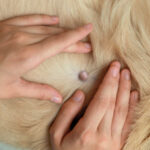 6 Types of Cysts in Dogs [With Pictures], and How to Treat - As a practicing veterinarian for over 17 years, I have treated hundreds of dogs with cysts. Cysts are a very… [...]
6 Types of Cysts in Dogs [With Pictures], and How to Treat - As a practicing veterinarian for over 17 years, I have treated hundreds of dogs with cysts. Cysts are a very… [...] Sebaceous Cysts in Dogs [Pictures & Veterinarian Advice] - Sebaceous Cysts in dogs is one health issue for which dog owners should be watchful, but thankfully, they are rarely… [...]
Sebaceous Cysts in Dogs [Pictures & Veterinarian Advice] - Sebaceous Cysts in dogs is one health issue for which dog owners should be watchful, but thankfully, they are rarely… [...]Disclaimer: This website's content is not a substitute for veterinary care. Always consult with your veterinarian for healthcare decisions. Read More.


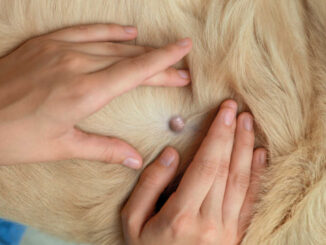
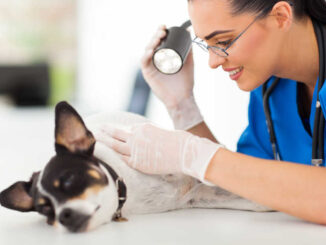
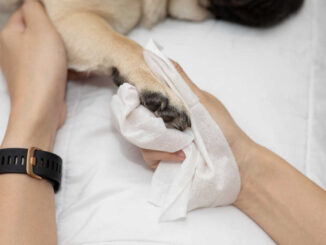
Be the first to comment